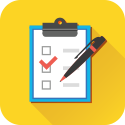Please choose a body region on the right for you to pin point the problem area of your body.

Shop by Condition

Shop by Brand
by Dr. Keri Chiappino
“Want water.” These words, spoken to me by a 7-year-old patient named James, might seem inconsequential to most parents. But for the parent whose child is diagnosed as autistic, these words are life altering. James had been diagnosed at age 2 with autism, a developmental disorder of the human brain that first shows signs during infancy or childhood.
Autism is characterized by widespread abnormalities of social interactions and communication, and restricted and repetitive behaviors. The manifestations of autism cover a wide spectrum, ranging from individuals with severe disabilities to less impaired individuals who may have active but distinctly odd social behaviors.
In Newsday, Cold Spring Harbor Laboratory recently revealed it believes it has identified autism-related genes. While this news is encouraging, a search for a cure continues. And at a rate of one in 150 children being diagnosed on the autistic spectrum, the incidents of autism have risen dramatically since the 1980s. In the meantime, parents are desperately seeking immediate ways to deal with the condition. Chiropractic Neurology (CN) offers a non-pharmacological, non-invasive approach to treating children with autism spectrum disorders (ASDs). The brain controls everything in our body and mind— from thoughts to heart rate to muscle tone.
Most people have a dominant hemisphere, or side, of the brain. This can easily be seen in personality traits— someone who is musical versus someone who is mathematical— or differences may be subtler and not easily detected by the untrained eye. Chiropractic Neurologists specialize in analyzing the differences between the hemispheres of the brain. James’s parents turned to Chiropractic Neurology for their son after pursuing a number of different treatment options. While these therapies proved helpful for some behaviors, James seemed capable of reaching a greater potential. During his first CN visit, an extensive neurologicalexam was performed to determine which hemisphere was deficient. A treatment plan was then designed using hemisphere-specific stimulation.
Therapies differ with each visit in order to accommodate the changing brain. The goal is to create new connections in the underfunctioning hemisphere that then creates a balance in the brain. In James’s case, the types of stimulation employed include spinning, doing coordination exercises, balancing, using cognitive exercises such as jigsaw puzzles and mazes, making sound stimulation, using a tuning fork and using visual stimulation. Autistic children are less likely to make requests, express needs or share experiences, and are more likely to repeat others’ words (echolalia). This can lead to frustration and aggressive behavior. When James said the words “want water,” at first I had to make sure he wasn’t just repeating words he had heard. But when I handed him water and he drank it voraciously, I was thrilled. This was an enormous breakthrough.
James’ parents report other improvements. He is more affectionate and less aggressive and frustrated as he begins to be able toexpress his needs. He also demonstrates a decrease in neurological tics, like hand flapping, and is able to make more connectionsand employ more abstract thinking. Upon recently seeing a fireman with a helmet, James was able to express his desire, “I want fire truck.” Before, James would not have been able to make the connection between the fireman and his desire for the fire truck. The implications are tremendous.
Up until now, the goal of treatment for ASDs has been to manage and improve symptoms and functioning. Treatments for children with ASDs are limited, with more than half of children diagnosed being prescribed psychoactive drugs or anticonvulsants. The most common drug classes being prescribed for ASDs include antidepressants, stimulants and anti-psychotics. Other drugs are prescribed off-label, meaning they have not been approved for ASDs. These medications may have serious side effects, and no known medication relieves autism’s core symptoms of social and communication impairments.
Other treatments include Applied Behavior Analysis (ABA), which focuses on teaching children tasks one-on-one using the behavior principles of stimulus, response and reward, and TEAOCH, which focuses on structuring the physical environment and using visual supports for language developmental tasks.
Chiropractic Neurology offers hope for the future. Helping children to make connections and express needs makes it possible for them to form relationships with others and to navigate in the world without institutional care. This increases the chances for a higher quality of life for an autistic child and the possibility of living drug-free and independently— a tremendous relief for parents who worry about the future for their children, especially as autistic children enter the teen years and adulthood.
When James was leaving the CN office after his treatment last week, he turned to me without prompting and said “Bye, Ke-ri,”another first. These are the moments that make work with special needs children priceless.
Dr. Keri Chiappino, DC, DACNB, is a holistic healthcare practitioner specializing in alternative approaches for people suffering from neurological disorders. Her successful Maximum Achievement Program (MAP) detects, measures and improves neurological function of children with learning disabilities. Her family practice, New Life Chiropractic, specializes in helping a wide range of chronic conditions, including autism, ADD/ADHD, Parkinson’s, vertigo, migraines and depression, that severely disable people. Dr. Chiappino maintains an office on the Upper West Side of Manhattan and one in Smithtown, Long Island, that she shares with her husband, Dr. Brent Reynolds, also a Chiropractic Neurologist. As seen in Parentguide and Parentguide News March 2008
What is Chiropractic Neurology?
Who Might Benefit From Chiropractic Neurology?
Those suffering from the following issues might want to seek CN.

Get $10 off your next order when you sign up to receive our email newsletter.*
Simply enter your email address below!
*Minimum order value of $100. Valid email address to qualify.







